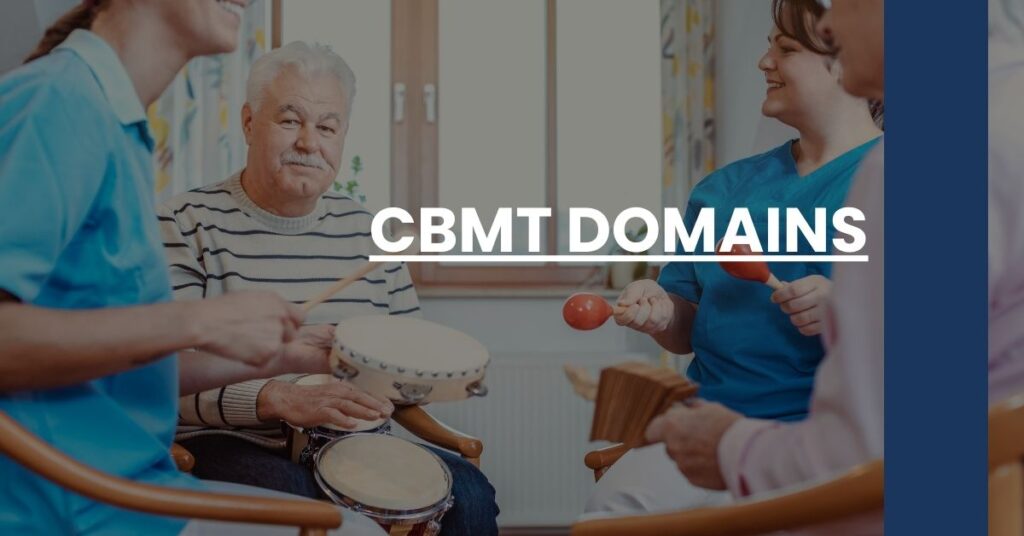CBMT domains are critical categories of competency for music therapists seeking certification. They encompass necessary knowledge and skills that ensure therapists provide effective and evidence-based care.
In this article, you will explore:
- Key aspects of clinical knowledge outlined in the Foundations of Music Therapy domain.
- The significance of Clinical Musicianship in treatment applications.
- How Treatment Planning and Implementation shapes patient-specific therapy strategies.
- The role of Evaluation, Documentation, and Professional Responsibility in maintaining high-quality care.
If you’re pursuing CBMT certification or just curious about these domains, read on for insights that promise to enrich your understanding and professional practice.
- Introduction to CBMT and Its Importance in Music Therapy
- Overview of the CBMT Domains
- The Clinical Foundations Domain
- The Clinical Applications Domain
- The Treatment Planning and Implementation Domain
- The Ongoing Documentation and Evaluation of Therapy
- Professional Development and Responsibilities
- The Role of CBMT Domains in Certification and Recertification
- The Impact of CBMT Domains on Quality of Care
- Preparing for Certification: Tips and Resources
- Conclusion: The Integral Role of CBMT Domains in Music Therapy
Introduction to CBMT and Its Importance in Music Therapy
When you’re on the brink of choosing a career in music therapy or furthering your qualifications, understanding and embracing the importance of the Certification Board for Music Therapists (CBMT) is pivotal to your success. The CBMT is not just a cer gatekeeper dappling gold on a therapist’s credentials; it’s the heartbeat of standardizing excellence in music therapy. It ensures that every note struck and every melody woven into therapy is tuned to the highest professional standards.
Being CBMT-certified (MT-BC credential), you’re not just a therapist—you’re a beacon of verified and trusted excellence. This isn’t just about individual accolades; it’s about upholding the magnitude of what music therapy can accomplish when practiced with rigor and depth.
Overview of the CBMT Domains
Imagine the CBMT domains as a compelling symphony—a composition that’s both complex and beautiful, with four movements that are critical to your career’s concerto:
- Foundational Knowledge: The theory, history, and research knowledge you need to set the stage.
- Clinical Musicianship: Demonstrating the harmony between your musicianship and how you apply it clinically.
- Treatment Planning and Implementation: Your expertise in creating a tailored therapy plan and conducting the session.
- Professional Development and Responsibility: A continuous crescendo of self-improvement and ethical practice.
These domains are the sheet music to your certification; they outline the skills and knowledge that need to resonate within your practice. Let’s delve into these movements one by one and understand why mastering them is so crucial to the efficacy of your craft.
The Clinical Foundations Domain
Before you can transform lives through music, you must first be a virtuoso of the Foundations of Music Therapy. This domain requires you to riff through the annals of music therapy history, understand the different theoretical approaches, and embrace ethical considerations, all while staying attuned to ongoing research and developments.
It’s essential to recognize that your practice doesn’t operate in a vacuum; it’s an exquisite blend of what has been, what is, and what could be. Whether it’s music therapy’s evolution over time or the intricate web of ethical practices, these foundational elements act as your guiding scale—it’s the theory behind your practice.
Curious about how the foundations of music therapy have shaped the profession? Perhaps you will find the grounding you seek in this comprehensive overview.
The Clinical Applications Domain
Your Clinical Musicianship is the heart of your practice. Here, you’re not just a musician; you’re a therapist whose every strum and hum can impact emotions, physical health, and well-being.
This domain is about the interplay of your musical skills with therapeutic intent—how well you can inhale a client’s need and exhale a tailor-made musical intervention. You’ll be expected to showcase proficiency in a variety of instruments and vocal techniques, not to forget improvisation, composition, and the ability to use music technology in innovative ways.
To excel in this area, stretch beyond the rudiments of music. Discover how to weave your musicality into a clinical tapestry that supports your clients’ therapeutic goals. Your musical aptitude should be both broad and deep, able to adapt to the diverse needs that each client presents.
Understanding Assessment in Music Therapy
The delicate art of assessment in music therapy is akin to tuning an instrument before a grand performance. Without proper assessment, therapy may falter, out of sync with the client’s needs. In this domain, you’ll equip yourself with:
- Skillful Observation: Scrutinizing client responses in both verbal and non-verbal junctions.
- Adaptive Evaluation: Employing assessment tools that resonate with the specific contexts of your clients.
- Clinical Decision-making: Interpreting data to harmonize it with potential treatment approaches.
Remember, assessment is the prelude to your treatment plan; it sets the tempo and informs the pitch and rhythm of the therapeutic journey you’re about to undertake with your clients.
The Treatment Planning and Implementation Domain
After tuning into your client’s needs through careful assessment, you’re ready to conduct a therapy session. This domain centers on translating your insights into a rich tapestry of therapeutic interventions.
Your treatment plan is your composition, meticulously crafted with individualized objectives, methods, and anticipated outcomes. And as you implement this plan, you’re conducting more than just music; you’re orchestrating a therapeutic process where every note plays a role in your client’s progress. You may improvise, revise and refine, just as a composer does, ensuring that the therapy remains client-centered and responsive.
To ensure you’re conducting at your peak, consider how you can blend the elements of treatment planning and implementation, harmonizing them with client needs and the broader goals of therapy.
In the next measures of our article, we will explore the following domains and how, with each step, you uphold the integrity of music therapy, creating ripples of transformation that can both soothe and stimulate the human spirit.
The Ongoing Documentation and Evaluation of Therapy
With your treatment plan hit all the right notes, your next movement in the symphony of music therapy is in Documentation and Evaluation. Here, meticulous record-keeping is as crucial as the therapy itself, as it charts the course of your client’s journey and the impact of your interventions.
Documentation serves as a testament to the therapy provided. It includes detailed notes on session activities, client responses, and progress toward goals. Think of it as a musical score, where each element is notated for future reference, ensuring a cohesive and informed approach to each session.
Evaluation, on the other hand, is like fine-tuning your instrument. It involves a continuous assessment of the therapy’s effectiveness, ensuring the interventions remain aligned with your clients’ evolving needs. Consider periodic reviews an essential practice; it’s what transforms a routine session into a crescendo of progress.
Remember to keep your documentation and evaluation practices in harmony with the standards prescribed within the cbmt domains. They ensure not only the quality of care you deliver but also that your professional orchestra is playing a tune that resonates with the highest ethical and clinical standards.
Professional Development and Responsibilities
As a lifelong learner in the profound discipline of music therapy, your tune does not end with a successful treatment plan. The Professional Development and Responsibility domain charges you with the mission of continuous growth and ethical practice that rings true throughout your career.
Imagine your professional journey as a series of fortissimos and pianissimos—times of intense learning and reflection. You are tasked with:
- Learning New Repertoires: Engage in ongoing education to learn the latest research and innovations in music therapy.
- Ethical Harmonization: Align your practice with the professional code of conduct, ensuring your work maintains its integrity and respect.
This commitment to lifelong learning ensures you remain proficient and relevant, able to adapt your therapeutic approaches to the ever-evolving field of music therapy. It calls for personal dedication but remember, every new piece of knowledge you acquire is another note in your grand career concerto.
The Role of CBMT Domains in Certification and Recertification
As you fine-tune your skills and resonate with the ethos of music therapy, the CBMT domains take center stage during your moments of certification and recertification. Like passing milestones in your professional odyssey, these processes are your opportunity to demonstrate mastery over the four domains that have become your practice’s foundation.
For initial certification, your grasp of the cbmt domains echoes your readiness to serve as a certified music therapist. Conversely, recertification acts as a periodic encore, affirming that your knowledge and skills remain in symphony with the field’s current best practices. These processes are not mere formalities; they’re the crescendos that underscore your commitment to the profession.
The Impact of CBMT Domains on Quality of Care
The cbmt domains are like the four strings on a bass—each integral to the depth and quality of the sound it produces. In music therapy, adherence to these domains ensures your practice is not just melodic but also therapeutic. It sets a gold standard for care ensuring every session is conducted within a structure that guarantees safety, effectiveness, and the best possible outcome for your clients.
The completeness of your therapy embodying the cbmt domains doesn’t just strike a chord with clients; it resonates with the broader goal of the field—the healing and empowering through music.
Preparing for Certification: Tips and Resources
To embark on this certification journey, preparation is key. Here is where you play a prelude, gathering your resources and setting the tempo for success. Consider this a study session in crescendo, where you acquaint yourself with typical CBMT exam questions and immerse in resources that fine-tune your understanding. Ready your mind like an instrument, attuned to the nuances of the exam content, and your success will be as harmonious as the music you practice.
Here are a few pointers for your preparation:
- Take practice exams to familiarize yourself with the exam’s cadence and key.
- Engage in study groups—fellow musicians can be the harmony to your melody.
- Rest strategically, keeping your mind sharp and ready for the performance that is the exam.
Conclusion: The Integral Role of CBMT Domains in Music Therapy
In the cantata that is music therapy, the cbmt domains are the foundational themes upon which your career is composed. From the clinical foundations that foster your therapeutic understanding to the musicianship that translates into healing, these domains guide your practice like sheet music guides a musician.
Achieving and maintaining certification is but a movement in the larger symphony of your professional life – each domain an essential note in the melody of your career. Upholding these standards ensures that the profession remains reputable and that the wonderful crescendo that is the healing power of music therapy continues to expand and positively influence the well-being of individuals around the globe.
Keep learning the art, mastering the therapy, and resonating with the cbmt domains, and you’ll not only amplify your abilities but contribute to a world where the power of music heals and transforms lives.
CBMT domains uphold rigorous music therapy standards, ensuring certified practitioners deliver high-quality, evidence-based therapeutic care.

